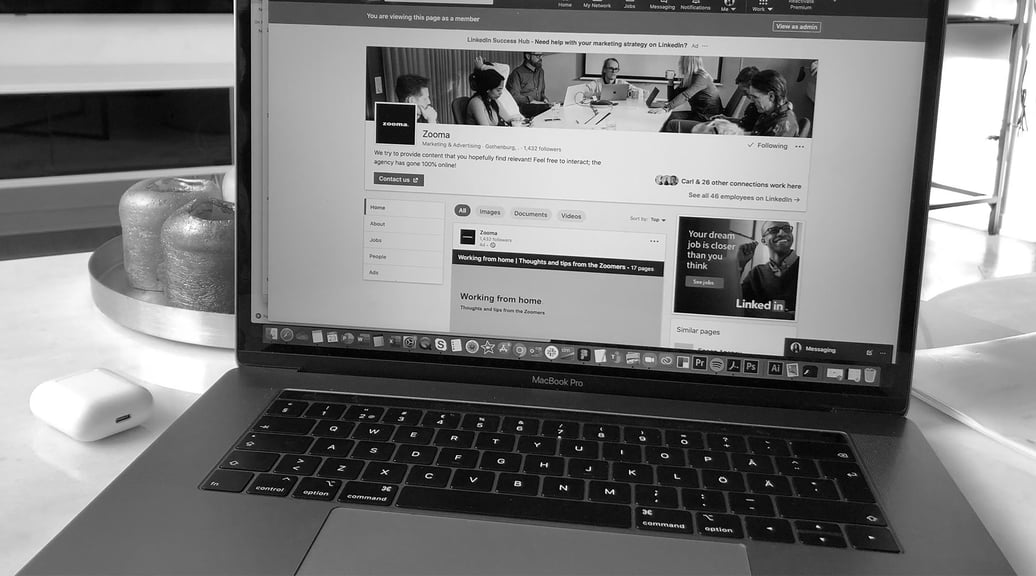- Learn
- The Onlinification Hub
- Apple privacy update: What it means for marketers
Apple privacy update: What it means for marketers
By Martin Ray

On September 20, Apple made its iOS-15 release generally available for free download. Amongst an array of consumer-friendly updates, there are a few marketing-related updates to keep an eye on. In addition to the already released App Tracking Transparency feature, Apple will limit data collection in email marketing and offer a built-in "VPN-like" service so that no one knows which sites you visit. In this article, I'll explain the implications of these changes for you as a marketer.
App Tracking Transparency
The iOS-14 update added app privacy labels that list the data apps are collecting. The App Tracking Transparency feature, launched in iOS 14.5, prompts users to choose whether or not they want to allow tracking on a particular app (like Facebook or LinkedIn, for example). Research suggests that about 96% of people opt out of in-app tracking when given a choice. In the iOS-15 update, a privacy dashboard lists all the permissions to access your camera or microphone you have granted your apps, and how many times they have used them.
The results could be very eye-opening indeed, and could prompt users to revoke those permissions or even delete the app.
What is the impact?
This feature will primarily impact apps and ads platforms. So unless your primary business model is making money from advertising or apps are a core part of your value proposition, the impact of this will be insignificant.
Mail Privacy Protection
According to Apple, the new Mail Privacy Protection feature will keep email senders from using pixels added to emails to collect details about the recipients. It will prevent senders from knowing when recipients open an email, and masks their IP address so it can't be linked to other online activity or used to determine their location.
What is the impact?
For many companies, most of their email opens (40-50%) occur either on Apple iPhones, iPads, or in Apple Mail. So how will this affect emails sent through email marketing software such as HubSpot, Salesforce or Mailchimp?
Strangely, it will probably cause open rates to increase. This is because of the technical features of this privacy update. For the share of your audience who use Apple mail clients, have iOS 15, and use the Privacy Protection feature, all of their emails will be pre-loaded by Apple, so they can be scanned. When this scan occurs, it will look like your email has been opened by the user, when it fact it might not have been. In other words, it may turn out that Apple Mail suddenly starts delivering a close to 100% email open rate.
This means that the email open rate metric will become increasingly useless over time - which is a good thing! Open rates are primarily a vanity metric, and we recommend clients focus on creating great, relevant content that adds value to their customers. Pay close attention to what you can measure and what really matters - i.e. conversions and your lead-to-customer conversion rate.
iCloud Private Relay
iCloud Private Relay is a new service for internet privacy. It is offered as a part of an iCloud+ subscription that allows users on iOS 15, iPad OS 15, and macOS Monterey to browse more securely and privately.
Private Relay protects users' browsing, DNS resolution queries, and insecure app traffic. When setting up an internet connection through Private Relay, users will get an anonymised IP address that maps to the region they are in, but won't divulge their exact location or identity.
What is the impact?
With Private Relay, it will become more difficult to use geolocation feeds to pinpoint a specific visitor's exact location accurately. However, because a lot of traffic is already routed at different locations from where the user actually is (especially for mobile traffic), this feature will have little impact unless you are doing targeted local advertising.
More importantly for most B2B companies, however, is that this feature masks the visitor's unique IP address and shares only an anonymised address with websites. This means that it will become impossible to link a unique visitor to a company's IP. As a result, companies won't be able to track anonymous visits from a specific company that they might be targeting if a user has this feature activated.
As with email open rates above, we think this is also a good thing! Knowing that an anonymous visitor from a company visits your website has little practical use, since you don't know who you should reach out to at the company. Instead, it would be best if you focused on serving your target groups with relevant, high-quality content that convinces them to engage with you actively and reveal their true identity.
Hide my Email
This feature is also a part of an iCloud+ subscription. Hide My Email will allow users to create a unique, randomised email address that will forward to a genuine personal inbox. In effect, Hide My Email works as a mask for your email address. Emails that are sent to the random email address will be forwarded straight to your genuine email address, and any emails that you sent can also be routed through the random address before they arrive at the recipient. In other words, this feature will allow users to communicate through email and sign up for services and offers without actually sharing their real email address.
Additionally, users can delete their random email addresses and create new ones whenever they want, allowing them to avoid being spammed with unwanted emails while keeping their main, 'real' email address alive.
What is the impact?
Hide My Email will have a big effect on how marketers use email information. Firstly, there will be no easy way to tell if a new email conversion is from a legitimate or a randomised email. Since the email address is typically used as the unique identifier in most email marketing and marketing automation software, it will become more challenging to assess the value of first-time email conversions (leads).
Secondly, this feature will probably cause email deliverability rates to go down as subscribers delete these random email addresses and create new ones, increasing "hard" bounces.
Thirdly, Hide My Email will likely accelerate email database decay - this is the rate at which the email addresses in your database become inactive and useless for communication, either through users switching email addresses (which typically happens when people change jobs), or through users opting out of email communications. Email databases typically decay at a rate of 20-25% a year, but as more people start using Hide My Email, this rate will probably increase. If you pay for your CRM or marketing software based on the number of email contacts in your database (as you do with HubSpot, for example), you should become more diligent in cleansing your email lists regularly.
On balance, however, I think this is a good thing as well. Lots of people already have a 'dummy' email address that they use before they trust a company not to harass them with unwanted promotions. It's likely that these people don't check their dummy inboxes very often, if at all.
In contrast, even though you won't be able to see a user's real email address with the Hide My Email feature, the emails you send will at least end up in their primary inbox. So if you focus on creating great and relevant content that resonates with your target group, the likelihood of nurturing them into customers will increase.
To conclude, Apple's privacy updates will require some marketers to change the way they communicate with contacts and measure success. But if you focus on creating genuine relevance for your company's key target groups with all of your content and communications, you probably don't have too much to worry about.
If you're looking for some more advice on adapting to changes in the digital landscape, make sure to take a look at our guide to the how, what and why of digitalisation. It's also available as a downloadable PDF below.

Get the guide to digitalisation
Keep updated on thoughts, facts and knowledge!
Related
-
By Martin RayWhy digital transformation fails
-
By Anders BjörklundWhat is digitisation, digitalisation and digital transformation?
-
By Martin RayA brief digital outlook 2019
-
By Anders BjörklundWhat traditional company is most ‘onlinified’ and digitalised?
-
By Martin EgerströmIs your organisation structured to manage change?
-
By Louise WaernHow to overcome your digital marketing skills gap



